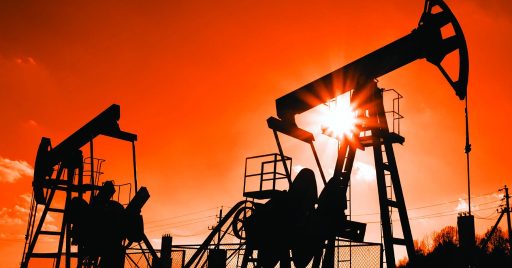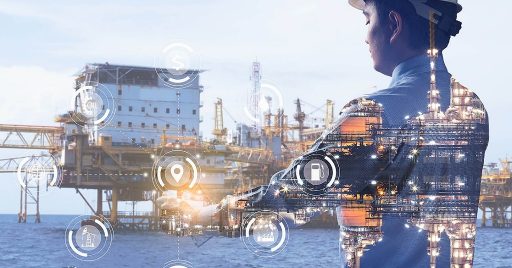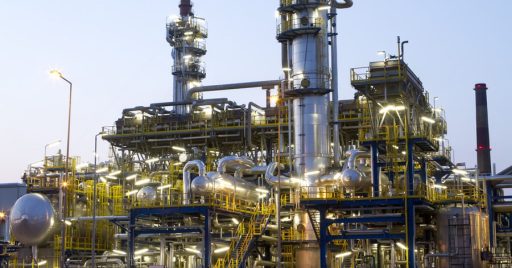The oil and gas industry may be the late comer in using AI, ML and DL in upstream oil and gas but the idea of digitalization was considered in the 70s. Due to the recent exponential growth of AI and also the Oil and Gas 4.0 concept that is aiming to achieve higher value by digital transformation, the process has started in recent years. There is also the problem of difficult-to-recover oil and gas reserves that have been emerging in the last decade in both well-developed (brownfields) and newly discovered (greenfields) reservoirs which requires innovative solutions.
In this article, we will provide an overview of AI, ML and DL in upstream oil and gas industry so managers have a clear vision on current trends, challenges and future expectations.
Table of content
What are AI, ML and DL?
Before we dive into the oil rig industry, we want to have a simple definition of AI, ML and DL.
AI which stands for artificial intelligence is the ability of a computer system to behave like a human in terms of reasoning, sensing, acting and adapting. It mimics human cognition for problem solving.
ML or machine learning is the process by which a computer gains that ability and learns from past data that are organized in mathematical models. The more diverse data is fed to a computer, the more human like the behavior would be.
If the algorithms are modeled after human brain, a neural network is created that can cause deep learning in a computer system.
The machine learning and deep learning algorithms are used to solve problems of classification, clustering, or regression types. They contain complex multi-dimensional algebraic expressions with coefficients defined to train the input and output data that describe a system, object or process. Based on this training they can provide insights about new data.
Currently there are hybrid modeling of physics-driven models combined with machine learning algorithms which can be either physics-dominated or data-dominated. The physics-driven model is used to generate training data for machine learning.
The data should be large enough for a computer to learn. It is estimated that to achieve acceptable performance levels with current AI such as supervised deep-learning, 5000 labeled examples are required but to match or even exceed human-level performance, maybe 10 million labeled samples are needed!
What are the current trends and future expectations for AI, ML and DL in upstream oil and gas?
Despite the fact that upstream oil and gas is the most capital-intensive and uncertainty-clouded but traditionally decisions were made by single-criterion approach which relied on expert knowledge while the actual field data was missing!
Ai can maximize efficiency by analyzing the data that is already present and observing the patterns to accelerate processes, reduce risks and costs. Therefore, the potential for innovations and growth is high.
Upstream segment starts with exploration then field development that leads to production of crude oil and natural gas. Each stage utilizes several operations to achieve success but they all need a strong HSE system to perform their operations with success and no casualties.
AI, ML and DL can enhance all stages while maintaining an optimal HSE system to protect workers, environment and assets in following ways:

• Exploration
The exploration stage aims to produce a 3D geological model of the oil/gas reservoir by acquiring data from geophysical and petrophysical studies that include seismic surveying, well logging and lab core analysis.
Seismographs are used to record time series waves that are initiated by a vibrator at the surface and are reflected from boundaries that divide layers of subsurface formation. The seismic traces indicate the strength of these elastic waves. Combined with spatial coordinates of corresponding sensors and the vibrator, these recordings are put to a reconstruction algorithm that creates 3D images of reflecting boundaries which are called seismic cubes. This process is offline since a specific high-performance computing is required. AI can enhance and accelerate this process.
The seismic cubes are then analysed by seismic interpretors through segmentation of points, lines and surfaces. This process might take more than a year to be completed so the expert geologists can decide where to drill wells. That is where AI-based solutions are being studied to accelerate interpretation by utilizing pattern recognition techniques.
Then there is well logging data collected from sensors on the wellbore which are interpreted by petrophysicists. These data are high resolution (at scale of centimeter) in contrast to seismic data that are low resolution (at scale of meters). petrophysical interpretation is time consuming. That is why ML interpretation is highly recommended. The studies show that the accuracy of ML interpretation was 92% and 1000 times faster compared to manual interpretation. The same approach could be used for well logging measurements by building ML recommendation systems that reduce spending on physical part of well logging or even core analysis.
The petrophysical interpretation is then used for refining the seismic interpretation by extrapolating collected properties to seismic cubes so they are saturated with permeability distribution, porosity and fluid saturation. This process is highly subjective and time consuming beyond couple of years. But automation with deep learning can accelerate the process by 1000 times!
• Field development
Reservoir engineers will start building reservoir model by upscaling geological model. Then they use software to create reservoir flow models at different field development schemes to plan well drilling and operation for the next 10 to 25 years. Then the optimal field development scheme is chosen based on company policies. The same process is programed for brownfields with a difference that history matching is used to correct initial models with production history of the field.
Ai-based solutions are expected to accelerate the reservoir modeling by 100 to 1000 times while having the same functionality. Upscaling can also benefit from deep learning algorithm by increasing objectiveness in the process. History matching is also expected to hugely benefit from AI-based system as traditionally there is no specific solution for this stage.
Well construction is the most cost intensive operation that uses 3 types of sensors at different levels that generate time series. The data can be used for drilling management but also to update the models. Ai-based drilling support systems combined with real-time drilling telemetry can reduce the non productive time by 20–40% and failures by 90%.
• Production
This stage incorporates pumps at different levels such as electric submersible, well injection, hydraulic fracturing and other well treatments that are equipped with high number of sensors to measure temperatures, pressure, flow rates and vibrations. Machine learning applications can be utilized as solely data driven or a hybrid system of physics-driven and data-driven math to optimize process, prevent unexpected failures, implement predictive maintenance and reduce cost of maintenance-on-schedule.
The well treatment procedures such as hydraulic fracturing and chemical treatment are hugely expensive even comparable with well construction. The physics-driven models can only provide rough estimates for result of well treatment procedures and the experts also have bias in selecting the optimal procedure to attract investments! That is why there is an opportunity for ML-based analysis to reduce investment risk by using data collected from past well treatment projects. optimization math and programming are used to develop algorithms to enable full-scale recommendation systems that select optimal well treatment procedure for every well.
• HSE
The upstream oil and gas has high risks for workers as there are explosive fuels, heavy equipments, chemical exposure, harsh weather conditions, elevated work stations and slippery floors. That is why OSHA has made the PPE mandatory on site along with detecting sensors and non stop supervision.
An AI-powered HSE system can supervise all site locations at once through CCTV cameras and send out notifications as soon as safety violations or risks are identified. Pattern recognition techniques are used for violations of PPE and access limit or detection of fire, leak and fallen person while predictive analytics is used for equipment functionality and maintenance.
What are the challenges of using AI, ML and DL in upstream oil and gas?
The challenges are present in every aspect of the industry that could be summarized in the following:

• Recruiting AI talent
With the race to use artificial intelligence in all industries, there is talent shortage of data specialists. In addition, there is the negativity toward fossil fuel industry that just makes it difficult to attract data specialists. Even more difficult is the case of petroleum engineers who should be data specialist in order to work with artificial intelligence in upstream oil and gas industry!
• Sharing responsibility
AI-based recommendation system might select an application and model that will lead to financial loss or even worse fatalities. Currently there is no clear perspective on who is to blame, the AI application, developer or user! With such a huge problem, a new legal base might need to be established.
• Accuracy of data
Upstream oil and gas is rich with data such as seismic surveys, well logging, core analysis, fluid analysis, drilling telemetry, drilling reports, drilling log, well testing, production rates and well treatment data. However the quality and accuracy of data is not clear specifically labeled data to train AI-based systems. A well planed data flow with situation specific procedure is required for training optimization. This requires massive changes in oil and gas infrastructure and processes which include investing on hardware and data storage centralization.
• Open collaboration
Sharing is an integral part of Ai technology since it was developed and studied by academia but oil and gas industries are not known to have sharing attitude specifically not with competitors and definitely not beyond their border! Acquiring AI technology and talent requires open collaborations in this industry. Investments are being made on AI start ups that are sometimes Joint Ventures such as Aramco and Chevron investing on Maana that is partnering with Microsoft to use Azure. University labs are also involved in providing technology and talent.
These collaborations require the oil and gas industry to move from tightly guarded system to open Innovation and ecosystem approach. This ecosystem has to overcome the challenges of interdependence to share value.

Conclusion
Upstream oil and gas industry has come a long way from empirical approach, based on analog cases to collecting data from sensors and finally using seismic, well logging and core data to create geological and reservoir models to plan field development. This modeling is a key part of most cost-intensive decision makings in upstream oil and gas.
Now there is a transition toward AI, ML and DL solutions where data is the key. This modern approach will solve challenges that were not even tackled before. Managers have a key role in the success of this transition!
Work place safety in upstream oil and gas is an area that can benefit the most from AI. An Intelligent HSE solution can help to save many lives and environment while improving the bottom line.